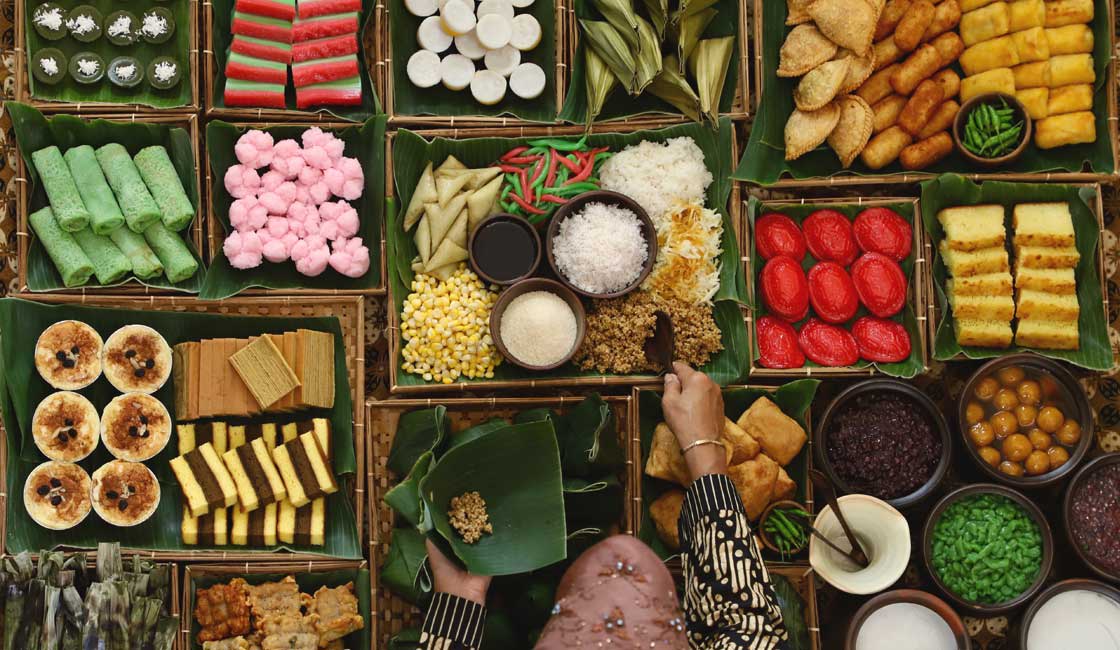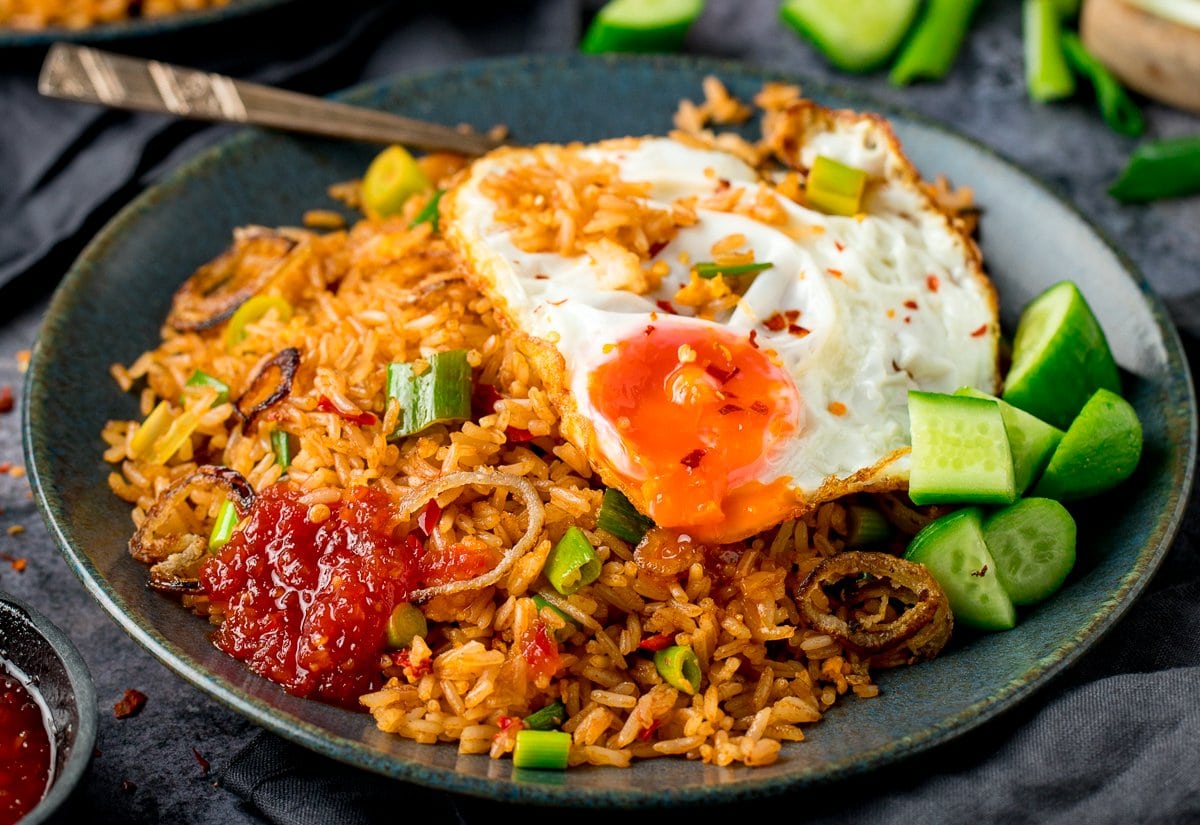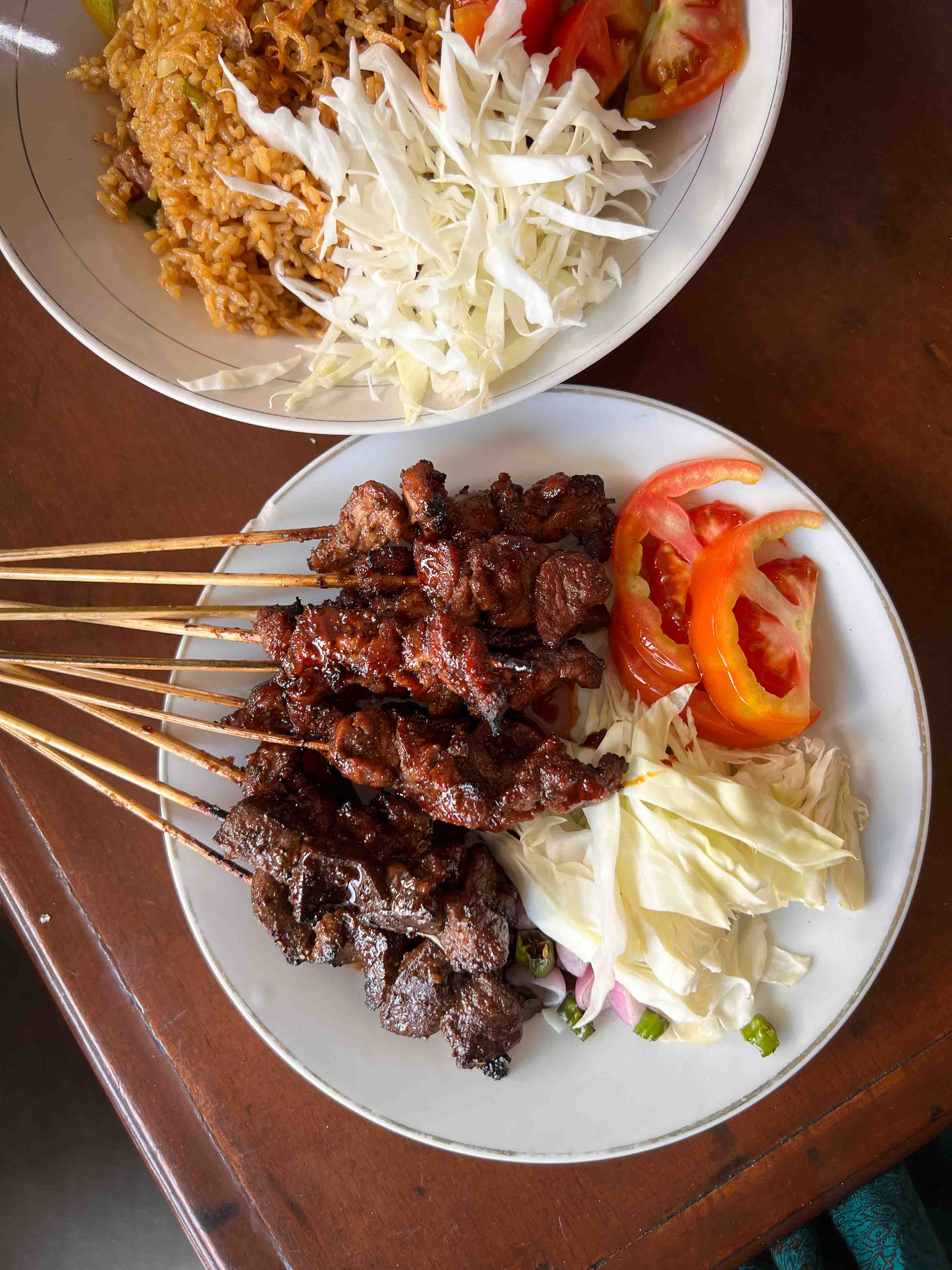Introduction to Indonesian Street Food Guide
Indonesian street food is a vibrant tapestry of flavors, textures, and colors that reflect the diverse culinary traditions of the archipelago. Stepping into the bustling streets of Indonesia will lead you on a sensory journey filled with the aromas of sizzling skewers, spicy curries, and fragrant rice dishes. From savory satay to crunchy martabak, each bite tells a story of cultural heritage and culinary innovation. Get ready to explore the rich tapestry of Indonesian street food and discover the delicious flavors that await you.
Introduction to Indonesian street food
Indonesian street food is a delightful journey for your taste buds. The vibrant streets are alive with tempting aromas and colorful food stalls. You’ll find a variety of dishes that reflect Indonesia’s rich culinary heritage. From flavorful sate skewers to hearty bowls of Nasi Goreng, each bite is a burst of bold and unique flavors. Get ready to explore the diverse world of Indonesian street food and satisfy your food cravings in the most delicious way possible.
Popular Indonesian street food dishes

Indulge in the popular Indonesian street food dishes that will tantalize your taste buds. Savor the rich flavors of Nasi Goreng, a beloved fried rice dish packed with spices and ingredients. Treat yourself to Sate, delicious skewers of grilled meat smothered in peanut sauce. Experience the delightful sweetness of Martabak, a stuffed pancake filled with either savory or sweet fillings. Dive into the fresh and crunchy Gado-Gado salad, bursting with an array of fresh vegetables and peanut dressing. Exploring these dishes will truly immerse you in the vibrant Indonesian food culture.
Nasi Goreng: Indonesia’s Iconic Fried Rice
Experience the iconic Nasi Goreng, a staple of Indonesian cuisine. Discover the history and significance behind this flavorful fried rice dish. Explore the diverse ingredients and variations that make Nasi Goreng a beloved dish across Indonesia. Indulge in the aromatic blend of spices and seasonings that infuse this dish with its distinct taste. From street food stalls to upscale restaurants, Nasi Goreng is a must-try for anyone craving a taste of Indonesian culinary heritage.
History and significance of Nasi Goreng

Nasi Goreng has a rich history dating back to early Indonesian civilizations. Its significance lies in being a symbol of Indonesia’s diverse culinary heritage. The dish originated from the need to repurpose leftover rice into a delicious meal, showcasing the resourcefulness of Indonesian cooks. Over time, Nasi Goreng evolved to incorporate unique local flavors, reflecting the country’s cultural diversity. Today, this iconic fried rice is not just a dish but a representation of Indonesia’s vibrant food culture and culinary creativity.
Ingredients and variations of Nasi Goreng

For Nasi Goreng, the key ingredients are rice, kecap manis (sweet soy sauce), garlic, shallots, and chili. Variations can include adding shrimp, chicken, or vegetables like green beans or carrots. Some cooks use terasi (shrimp paste) for a unique flavor, while others opt for extra spices like turmeric or ginger. The beauty of Nasi Goreng lies in its versatility—you can customize it to your taste preferences by adjusting the ingredients and seasonings to create a truly personalized dish.
Sate: The Flavorful Indonesian Skewers
Sate, also known as satay, is a popular Indonesian street food loved for its flavorful skewers. You’ll find various types of sate across Indonesia, each offering a unique taste experience. The skewers are typically made with marinated meat, such as chicken, beef, or lamb, grilled to perfection over charcoal. Served with a side of peanut sauce for dipping, sate is a delicious and aromatic snack that you must try while exploring Indonesian street food.
Different types of Sate in Indonesia

In Indonesia, you’ll encounter various types of sate to tantalize your taste buds. From Sate Ayam (chicken sate) to Sate Padang (beef sate from Padang), each variant offers a unique flavor profile. If you prefer seafood, try Sate Udang (shrimp sate) or Sate Lilit (minced seafood sate). Vegetarians can opt for Sate Jamur (mushroom sate) or Sate Tempe (tempeh sate). The diversity of sate in Indonesia ensures there’s a skewer option for everyone to enjoy.
Sate preparation and accompaniments

For Sate preparation, the meat is marinated in a mixture of spices like turmeric and lemongrass. Skewer the marinated meat and grill it over charcoal for that smoky flavor. Serve Sate with a side of peanut sauce for dipping. Some popular accompaniments include lontong (compressed rice cake) and sliced shallots and cucumbers. These accompaniments complement the savory and slightly sweet taste of the Sate perfectly. Enjoy the skewers hot off the grill with a burst of flavors in every bite.
Martabak: The Indonesian Stuffed Pancake
Martabak is a popular Indonesian treat enjoyed by locals and visitors alike. You will find this stuffed pancake in sweet and savory flavors, offering a delightful contrast of tastes. The origins of Martabak date back to traditional Indonesian cuisine, showcasing a fusion of culinary influences. The sweet versions are filled with chocolate, cheese, or nuts, while the savory variations may contain minced meat or vegetables. Martabak is a must-try street food that captures the essence of Indonesian flavors in every bite.
Origins of Martabak
Martabak has a rich history rooted in Indonesian culinary traditions. Its origins can be traced back to the diverse cultural influences that have shaped Indonesian cuisine over the years. The concept of stuffed pancakes can be found in various cultures, but Martabak has its unique Indonesian twist. This popular street food showcases the creativity and innovation of Indonesian cooks who have perfected the art of making these delicious and satisfying treats. Enjoyed by many, Martabak continues to be a beloved snack that captures the essence of Indonesian flavors.
Sweet and savory Martabak fillings
:max_bytes(150000):strip_icc()/__opt__aboutcom__coeus__resources__content_migration__serious_eats__seriouseats.com__images__2014__09__20140802-Jogja-martabak-egg-pancake-roti-sweet-19-6357b51df6644351955604efff6cf45d.jpg)
For a sweet Martabak filling, try the classic chocolate and cheese combination. The gooey chocolate melts perfectly with the savory cheese, giving a satisfying taste. You can also opt for condensed milk or Nutella for a richer flavor profile. If you prefer savory, go for minced meat mixed with spices and herbs, providing a flavorful and hearty experience. Don’t forget to add eggs for a creamy texture. Whether you like sweet or savory, Martabak offers a delightful treat for your taste buds. Enjoy exploring different fillings!
Gado-Gado: The Indonesian Salad Sensation
Gado-Gado is a popular Indonesian dish. This salad combines various vegetables like potatoes, green beans, and bean sprouts. You’ll also find tofu, tempeh, and hard-boiled eggs. The dressing is a delightful peanut sauce, giving Gado-Gado a rich flavor. It’s usually served with shrimp crackers or rice on the side. Indonesians love this salad for its mix of textures and flavors. Give Gado-Gado a try for a tasty and healthy meal option!
Gado-Gado ingredients and dressing

For the Gado-Gado salad, you will find a mix of vegetables like potatoes, green beans, and bean sprouts. Along with tofu, tempeh, and hard-boiled eggs. The dressing is a tasty peanut sauce that gives a rich flavor to the dish. It’s a perfect combination of textures and flavors in every bite. Indonesians love the freshness and heartiness of this salad. Give it a try and experience the deliciousness of Gado-Gado!
Regional variations of Gado-Gado
In different regions of Indonesia, Gado-Gado may have variations in ingredients and flavors. Some regions might add more spicy elements to the peanut sauce, while others prefer a sweeter taste. The choice of vegetables can also vary based on local availability, with some regions including unique indigenous vegetables. These regional variations add diversity to the dish, making each version of Gado-Gado a unique and delicious experience worth trying.
Rendang: Indonesia’s Rich and Flavorful Stew
Indonesia’s Rendang is a rich and flavorful stew that you must try. It holds cultural importance and is a must-have dish in Indonesian cuisine. The cooking process involves slow cooking meat in coconut milk and a blend of spices until the flavors are deeply infused. Key ingredients like lemongrass, galangal, and turmeric give Rendang its unique taste. The result is tender meat simmered in a thick, aromatic sauce that will leave your taste buds satisfied.
Rendang’s cultural importance
Rendang holds significant cultural importance in Indonesia as it is often served during special occasions like weddings, celebrations, and festivals. It symbolizes tradition and heritage, reflecting the country’s diverse culinary history. The dish’s preparation and serving are deeply rooted in Indonesian customs, showcasing the country’s culinary expertise and flavors. Rendang’s presence on the dining table signifies respect for guests and demonstrates the host’s hospitality. It is more than just a dish; it is a cultural emblem of Indonesia.
Cooking process and key ingredients of Rendang
To make Rendang, you need beef, coconut milk, lemongrass, galangal, turmeric, ginger, and chilies. The key is slow cooking. First, blend the spices into a paste. Then, cook the beef in the spice paste and coconut milk until tender. Let it simmer to absorb flavors. This slow-cooking process creates the rich, aromatic stew that Rendang is known for. The dish is ready when the sauce thickens and coats the meat perfectly. Enjoy this flavorful Indonesian delight!
